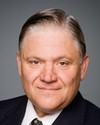I’m moving away from the speaking notes in the spirit of providing a broader context. For greater understanding, the Department of Veterans Affairs was already looking at this issue between 1996 and 2000. In the end, you're going to hear me say that we looked at this issue for a decade—not a year, not five years, but a decade—and finally determined what the NVC should look like. From 1996 to 2000, that first step, which Janice just provided, was to look into this, within the department, because the signals were very strong that things had to change for a lot of reasons.
The Veterans Affairs Canada–Canadian Forces Advisory Council—you'll see this in a lot of the readings—the VAC-CFAC, was formally established in July 2000 to provide the minister and the department with advice on enhancing existing policies or developing new policies, programs, and services for still-serving Canadian Forces personnel, veterans, and their families. This 21-member council was chaired by Dr. Neary—an important name to note—former Dean of the Faculty of Social Science at the University of Western Ontario. He was joined by other academics, researchers, and practitioners, as well as representatives from the still-serving and retired Canadian Armed Forces community and representatives from other government departments.
I'm moving away....
Mr. Chair, I apologize, but I want to make sure that we put this in context. When you look at the back of the report, which I hope members of this committee will read, it lists who those 21 individuals were. They included General Roméo Dallaire. He was part of the committee that looked at this important issue on the new Veterans Charter. It also included four other veterans—I confirmed this again last night. It included representatives from all the stakeholders that existed at the time. Remember, at that time, this committee didn't exist. It was the Standing Committee on National Defence and Veterans Affairs. At that time, there weren't all the stakeholders we see today. To hear some stakeholders today say that they didn't get a chance to write a comment is understandable because they weren't in existence at the time, or who knows if they were a veteran or part of that group.
There were the stakeholders. There were serving men and women in uniform, at the time, representing the reserve force, the regular force, as well as—very important—those from the military health care system. When you look at those 21, as you'll see if you dig down, it’s fair to say that it was a very broad, very inclusive group. It included stakeholders, veterans still serving, academics. We had the collective wisdom of those who knew this issue.
Janice is going to explain in a minute what they then did, which will open up a lot of eyes—it did for me—on how broad and extensive this collaboration was as that group went out.


